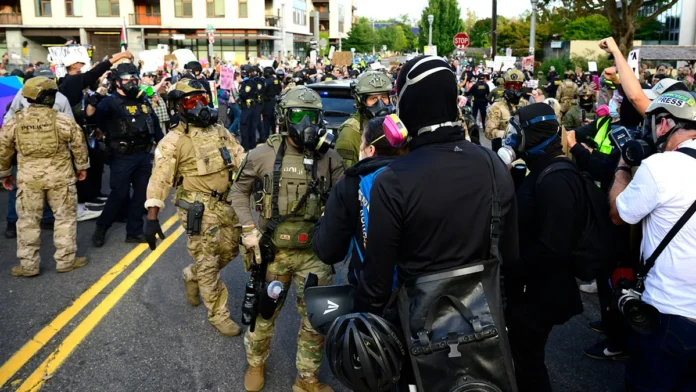Portland ICE facility continues to face ongoing protests and escalating tensions, highlighting challenges for local authorities and federal law enforcement. The protests have persisted for more than 100 consecutive nights outside the South Portland detention center, creating significant security and operational concerns.
Police Chief Bob Day has defended the department’s “crowd support” approach, which aims to manage demonstrations while maintaining public safety. He explained that officers engage with protesters to de-escalate conflict, reduce confrontations, and protect both demonstrators and the surrounding community.
Despite these measures, federal officials report that violence has increased. Cammila Wamsley, director of Portland’s ICE office, noted that the facility has experienced repeated property damage, physical altercations, and interference with daily operations. Wamsley emphasized that the lack of local police intervention has contributed to the persistence of these incidents.
City leadership, including the mayor and city council, has instructed police to minimize direct engagement with protesters. While officials argue this approach supports civil rights, critics contend it allows aggressive behavior to continue unchecked. The tension highlights broader debates over balancing constitutional rights with public safety responsibilities.
Experts in public safety and civil policy emphasize that consistent and clear law enforcement protocols are critical during prolonged demonstrations. They suggest that collaboration between local and federal authorities can mitigate risks while respecting demonstrators’ legal protections.
The ongoing unrest at the Portland ICE facility has also attracted national attention. Analysts note that the situation reflects wider political and social divisions over immigration enforcement in urban areas. Additionally, the protests underscore challenges that cities face when federal facilities operate within highly populated neighborhoods.
Looking ahead, authorities plan to evaluate security strategies and consider additional federal support to protect personnel and infrastructure. Both local and federal agencies aim to strike a balance between enforcing the law and allowing lawful protest.
Overall, the situation at the Portland ICE facility underscores the need for strategic coordination, proactive engagement, and measured law enforcement during periods of civil unrest. The facility’s ongoing challenges provide lessons for urban policy, public safety, and national immigration management.
For more political updates, visit DC Brief.


